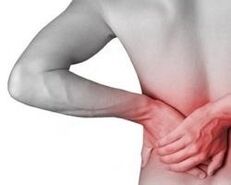
Prostatitis is an inflammatory process that develops in the prostate. In theory, every man is at risk of developing it, regardless of age.
But men are more susceptible to diseases, which are influenced by the following factors:
- Sedentary lifestyle;
- Prolonged sexual abstinence or, conversely, an excessively active sex life;
- Frequent constipation. Note that only regular bowel disorders can cause prostatitis, not episodic constipation;
- Hypothermia. To get sick with prostatitis it is not necessary to swim for hours in cold water, just sit on a cold stone or spend a lot of time in the cold with inappropriate clothes;
- Chronic inflammatory diseases (for example, chronic bronchitis) or an untreated outbreak of infection in the body (caries, tonsillitis);
- Chronic and acute urological diseases or previous venereal diseases (urethritis, gonorrhea);
- Sedentary work. First, they are those who are forced to sit constantly at work, with no opportunity to get up and warm up (drivers, computer operators);
- Any condition that can suppress the body's immune system. These include inadequate or inadequate nutrition, physical and emotional overload, constant lack of sleep, chronic stress).
All of the above factors become especially dangerous if the man is over 50 years old. In fact, at this age, the hormonal background changes significantly, immunity decreases, several diseases appear and, in addition, few men at this age lead an active lifestyle. It is for these reasons that all men over 50 must prophylactically consult a urologist every six months.
How does the disease begin?
As a rule, the first sign of the development of prostatitis is unpleasant or even painful feelings when urinating. Sometimes you have to get up several times a night to go to the bathroom. Few go to the doctor at this stage of the disease's development, although at this stage the treatment is short-lived and effective.
After a while, sharp pains in cuts, tugs or stitches appear in the pubic or perineum, sometimes the pain radiates to the penis or anus. Urination becomes frequent and painful, and the urine becomes much more cloudy. Pain may appear during bowel movements.
In addition, body temperature can increase, sometimes men notice the release of drops of a translucent white liquid from the urethra. As a rule, most men go to the doctor during this period of illness.
What happens if prostatitis is not treated?
If, after the above symptoms, you do not see a doctor and start treatment, the disease will progress further. The temperature can rise to 40 degrees, the pain becomes very strong, urination becomes very painful, the flow of urine is disturbed (it exits the urethra in a fine stream or drop by drop). The longer prostatitis is left untreated, the greater the likelihood of acute urinary retention and the development of acute renal failure. In addition, timely examination is necessary, since symptoms similar to prostatitis are also present in cystitis and prostate cancer.
Diagnosis
After contact with the urologist, a study of the prostate is made through the rectum, as well as an analysis of prostate secretion. This procedure is not very pleasant and, at times, painful, especially in the more advanced stages of the disease. Sometimes this is why men don't want to go to the doctor.
But in fact, the sooner you go for an exam, the less painful it will be. In addition, palpation of the prostate itself is already a treatment, as it helps to eliminate congestion.
In the laboratory, the secretion of the gland is sown in a nutrient medium, the sensitivity of the microflora to antibiotics is determined and the analysis of the urine is performed. Ultrasonography is also performed to confirm the diagnosis. Most of the time, the treatment of prostatitis is not difficult for a urologist, subject to timely treatment.
The early stages of prostatitis are treated at home. The patient receives antibacterial medications, baths, compresses and other thermal procedures in the perineum, in addition to analgesics and prostate massage. The treatment is carried out for about 10 days. During treatment, you should also not eat spicy foods and alcohol.
Signs and treatment of chronic prostatitis
In chronic prostatitis, pain occurs in the perineum, which decreases after walking or light exercise; there is a burning sensation when urinating. A man often does not sleep well and is irritated.
If left untreated, chronic prostatitis can cause pelvic inflammatory disease and even infertility. Reflexology and prostate massage are also added to the above treatment. The patient is recommended to lead a more active lifestyle, to exclude spicy foods and alcohol from the diet.
Trust the doctors
You should not try to diagnose yourself, without a visit to the doctor. After all, only a urologist will be able to choose the treatment regimen that is right for you, based on the test results.
By self-medicating, you are taking antibiotics "blindly". This can lead to the transition from the disease to the chronic form. If the disease continues to progress, hospitalization may be necessary. In a hospital, the course of therapy will last 1 to 2 weeks, perhaps even longer.
To prevent the development of complications, be sure to have a urologist checked every six months.
Prophylaxis
Prostatitis prevention comes down to the following recommendations:
- If you are going to spend a lot of time in the cold, choose the right clothes;
- Eat regularly and fully;
- Lead an active lifestyle, play sports;
- Use laxatives for constipation;
- Have a regular sex life, preferably with a regular partner.
A large number of men suffer from prostatitis. This article provides basic information about the disease and explains why it is necessary to visit a urologist regularly.



























